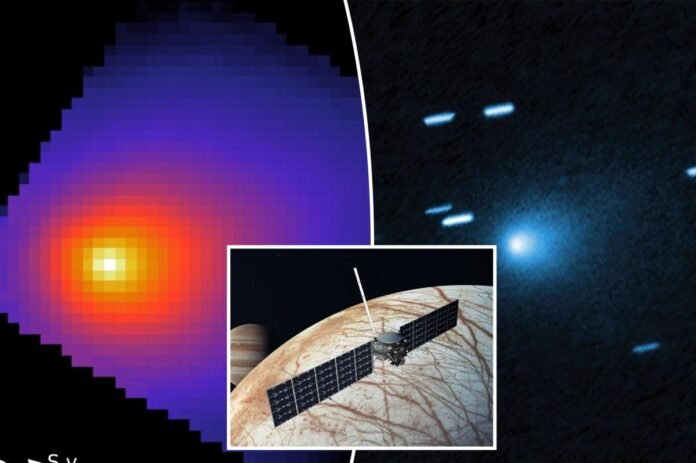Space probes Hera and Europa Clipper could cross the tail of the mysterious comet 3I/ATLAS—but only if mission planners move quickly.
The two NASA craft are on separate journeys through the solar system. A new paper in the Research Notes of the American Astronomical Society shows that both probes will be flying “down‑wind” of the comet as it drifts past the Sun over the next two weeks. This period gives scientists a rare chance to sample the comet’s trail of dust and gas for the first time ever.
Why the comet matters
Discovered in June, 3I/ATLAS—sometimes called “Manhattan‑size” because of its gigantic tail—has odd features that have stoked curiosity. It ejects a nickel alloy found only in human-made objects, and at one point it pushed an “anti‑tail” back into space, a behavior some researchers, including Harvard astrophysicist Avi Loeb, have linked to a possible alien probe.
The comet will swing closest to Earth by the end of October. But with the Sun blocking most telescopes, ground‑based observations will be impossible, so the data we can gather come from moving spacecraft like Hera and Europa Clipper.
What the probes can do
Hera was launched in 2015 to study Saturn’s moon Titan, but its instruments are not designed to analyze cometary dust. The rover’s primary science team prefers to keep it on its Titan trajectory.
Europa Clipper, meanwhile, was launched in 2022 to investigate ice on Jupiter’s moon Europa. Its suite of instruments, including spectrometers and cameras, could detect the composition of particles in the 3I/ATLAS wake. If the probe’s trajectory is nudged to intersect the comet’s tail, scientists would gain valuable insight into this interstellar visitor’s makeup.
Time is of the essence
The window for such a fly‑by is only about two weeks. Mission planners must decide within this short period whether to adjust the probes’ orbits. NASA’s Jet Propulsion Laboratory monitors both missions, so a rapid update to the voyage plans is possible but requires coordination among teams.
Why this matters to the public
Because 3I/ATLAS is the first confirmed interstellar comet that visited our solar system, studying its tail will shed light on the conditions and materials outside our Sun. If the comet’s anomalies are linked to intelligent technology, the data could transform our understanding of life in the universe.
In short, NASA’s Hera and Europa Clipper may get a once‑in‑a‑lifetime chance to sample the trail of a comet that could be a relic from another star—an opportunity that hinges on swift decision‑making.
Source: New York Post
Stay informed on all the latest news, real-time breaking news updates, and follow all the important headlines in world News on Latest NewsX. Follow us on social media Facebook, Twitter(X), Gettr and subscribe our Youtube Channel.



